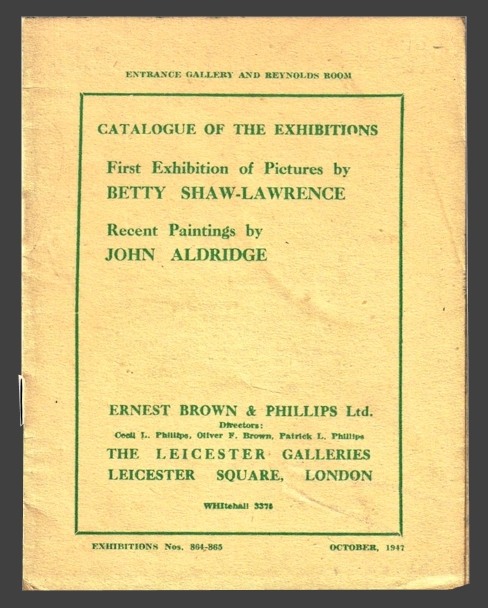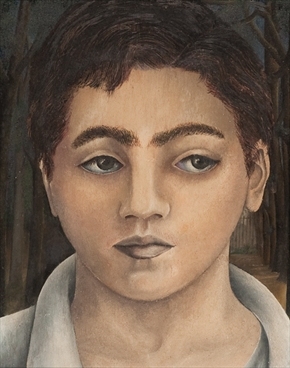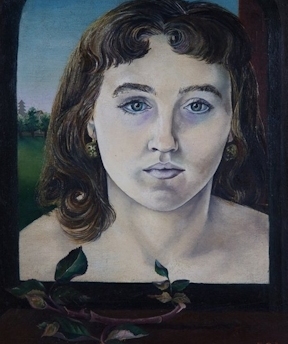
Portrait of
the Artist
Bettina Shaw-Lawrence |
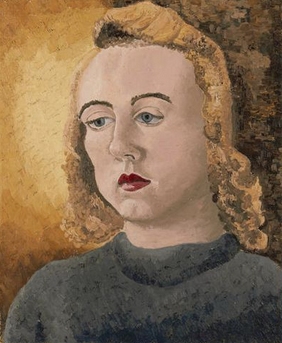
Bettina Shaw-Lawrence David Kentish (c.1922-c.1965) |
|
Bettina Shaw-Lawrence
|
|
a brief biography from Wikipedia:
The artist attended, before the outbreak of the Second World War, drawing classes under Fernand Léger and studied sculpture with Ossip Zadkine in Paris. During those formative years David Gascoyne, the Surrealist poet, was her mentor. On her return to London in September, 1939, Shaw-Lawrence met David Kentish and Lucian Freud both students at Cedric Morris and Arthur Lett-Haines' East Anglian School of Painting and Drawing. This encounter enabled her to spend the summer of 1940 studying under the artist Cedric Morris and though she returned to the School at Benton End near Hadleigh, Suffolk, for short spells during the war, Shaw-Lawrence mainly painted in Richmond-upon-Thames. |
The photos below show Zadkine in his Paris studio courtyard, 1930 and the Atelier Moderne studio of Leger in Paris, 1924.
Shaw-Lawrence's paintings show a strong sculptural feel for mass and form that was undoubtedly reinforced by her proximity to the two artists.
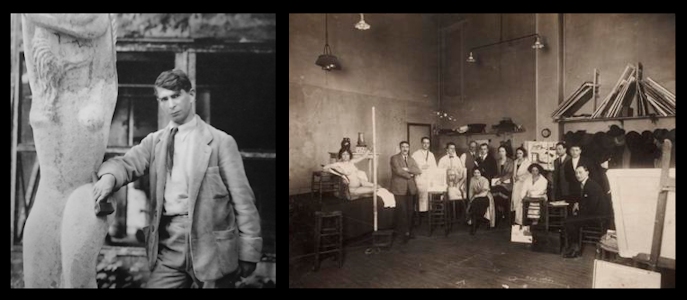
LEFT: Zadkine from: the-broom-cupboard.tumblr.com RIGHT: Fernand Léger’s Atelier Moderne studio 1924, from: J.W. Power: Abstraction – Création Paris 1934 The University of Sydney, Museum of Contemporary Art The Australian artist Power was associated with the London Group of British Modernists.
|
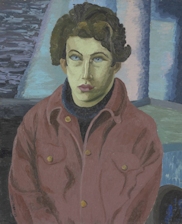
Fellow student Lucian Freud's portrait by Cedric Morris at the Tate |

________________ David Carr and Lucian Freud at Cedric Morris's school |
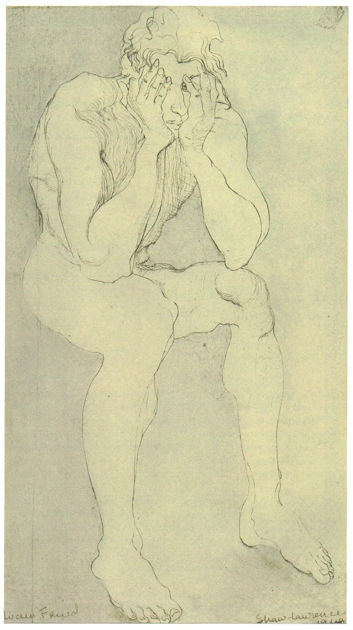
|
"Lucian Freud"
by Bettina Shaw-Lawrence pen & ink on paper, 23 x 41 cm private collection Below: Detail of the drawing 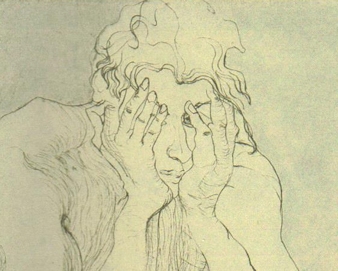
|
|
1943 Trip to Scotland
with Lucian Freud & 'Nigel Mc.' |
|
In 1943 M.J.T. Tambimuttu's periodical Poetry (London) started Editions Poetry London which published illustrated volumes of poetry. One of the volumes was David Gascoyne's Poems 1937-1942 illustrated by Graham Sutherland, which proved to be one of the more successful volumes. We've posted a few of these striking images on the
David Gascoyne images page of this issue.
A subsequent volume was The Glass Tower, a volume of poetry by Nicholas Moore, to be illustrated by the young artist Lucian Freud. In 1943 Lucian Freud, Bettina Shaw-Lawrence and Lucian's friend 'Nigel Mc.' set out for Scotland, quite probably for inspiration for Lucian's book commission. Sandra Boselli interviewed Shaw-Lawrence for her Spring 2011 British Art Journal article Lucian Freud: a Scottish interlude. While Freud is the focus of the article, it sheds a bit of light on Shaw-Lawrence as well. The trip was subsidized by Freud's benefactor, Peter Watson. According to Boselli, 'Nigel Mc.' was another of Watson's protege's. a selection from: Lucian Freud: a Scottish interlude by Sandra Boselli Source: British Art Journal. Volume 11, issue 3 (Spring 2011): p69. Bettina Shaw-Lawrence recollects Lucian fixing an assignation with his friend Nigel Mc. and herself to discuss the logistics of their journey to Scotland. The three conspirators met one evening upstairs at the Cafe Royal, a select location probably considered as propitious for discussing their secret plan. It was of paramount importance to prevent Peter Watson from finding out that Bettina was accompanying the two young men on this trip. He was willing to pay for his proteges, but would have refused pointblank to foot the bill where the young woman was concerned. Bettina by her own admission was seen by the influential and affluent homosexuals of London's artistic coterie as a 'troublesome girl'. Nevertheless, her talent and exuberance enabled her to make many friends among whom was Lucian Freud. They had known each other since her return from Paris in 1939 where she had studied art for a year. It was the start of a very close, life-enhancing wartime relationship. According to Bettina Shaw-Lawrence they developed in those early years strong emotional and artistic bonds fraught with rivalry. |
|
Brief description from: University of Otago, New Zealand: In an attempt to etch the likenesses of common herbs such as 'Eyebright', 'Golden Rod', and 'Darnel', and provide their properties and uses, Betty Shaw-Lawrence not only read numerous old herbals, but also physically examined many samples of plants. Her advertisement to this limited edition of 260 ends: 'Read, then, what is written here; mark it if you please; learn it if you will; but be chary before you inwardly digest it...'.
— Betty Shaw-Lawrence,
An Herbarium for the Fair:
Being a Book of Common Herbs with Etchings
Dark brown cover below: from Antiquariaat Jan Meemelink Illustrated book cover below: Angela James, online bookbinding exhibit, Indiana University |
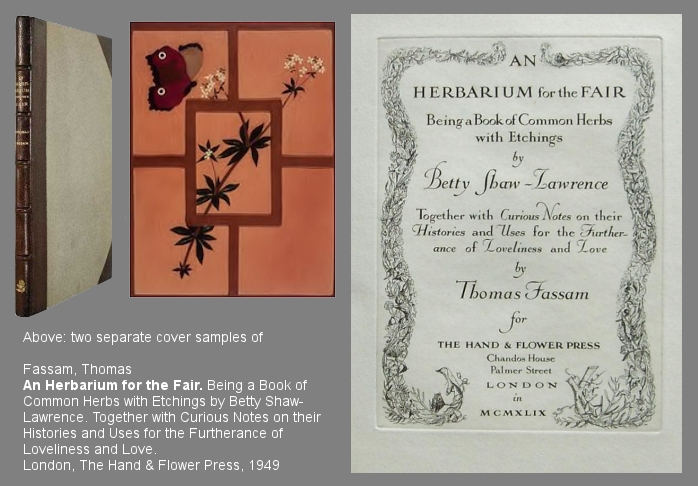
|
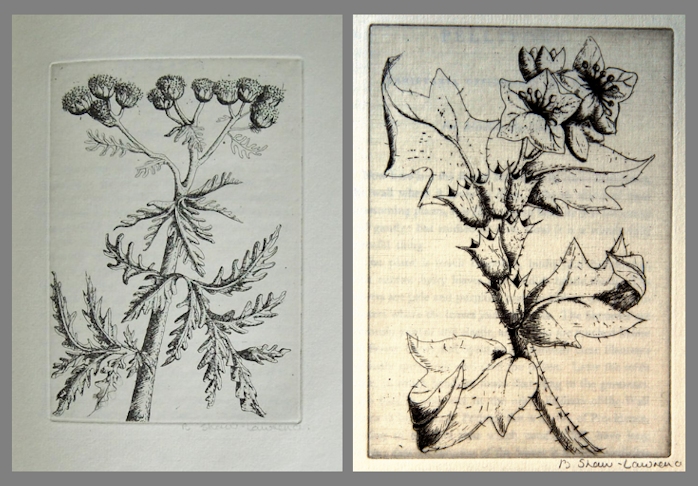
|

|
David Emery Gascoyne
_________ pen and ink, 1944 _________ Bettina Shaw-Lawrence National Portrait Gallery London
|
|
Robert Fraser, biographer of
NIGHT THOUGHTS: the Surreal Life of the Poet David Gascoyne recounts his connecting with Bettina Shaw-Lawrence and the subsequent re-discovery of the 1944 portrait of Gascoyne above 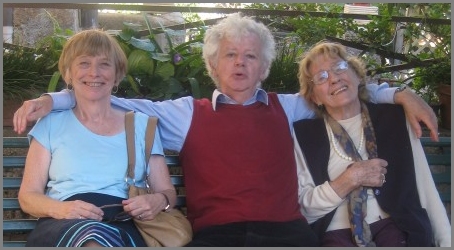
|
